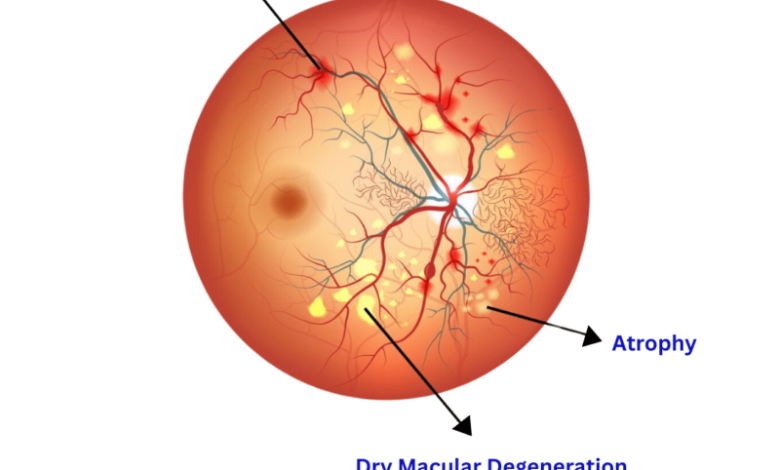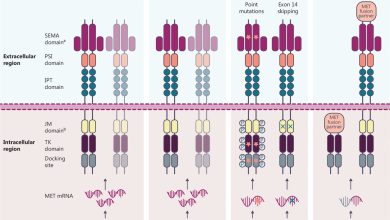Effective Strategies for AMD Disease Treatment: Enhancing Vision Health

Age-related macular degeneration (AMD) is a common eye condition that primarily affects older adults, leading to the gradual deterioration of central vision. As a leading cause of vision loss, understanding AMD disease treatment options is crucial for those at risk or currently suffering from this condition. In this blog post, we will explore the various AMD disease treatment strategies, their benefits, and how they can improve the quality of life for patients.
Understanding AMD: The Basics
AMD is a progressive eye disease that affects the macula, the central part of the retina responsible for sharp, straight-ahead vision. There are two main types of AMD: dry and wet. Dry AMD, the more common form, involves the thinning of the macula and the accumulation of drusen (yellow deposits). Wet AMD, although less common, is more severe and involves the growth of abnormal blood vessels under the retina, leading to rapid vision loss.
The Importance of Early Detection
Early detection of AMD is critical for effective treatment. Regular eye exams can help detect the early signs of AMD before significant vision loss occurs. Once diagnosed, patients can explore various AMD disease treatment options that can slow the progression of the disease and, in some cases, improve vision.
AMD Disease Treatment Options
There are several treatment options available for AMD, each with its benefits depending on the type and stage of the disease. Below, we discuss some of the most common AMD disease treatment strategies:
1. Anti-VEGF Injections
One of the most effective treatments for wet AMD is the use of anti-VEGF (vascular endothelial growth factor) injections. These injections help reduce the growth of abnormal blood vessels in the retina and prevent further vision loss. Patients typically receive these injections regularly, depending on the severity of their condition.
Benefits of Anti-VEGF Injections:
- Slows Disease Progression: Anti-VEGF injections have been proven to slow the progression of wet AMD significantly.
- Improves Vision: In some cases, patients may experience an improvement in vision after receiving these injections.
- Minimally Invasive: The procedure is minimally invasive, with a low risk of complications.
2. Photodynamic Therapy (PDT)
Photodynamic therapy is another treatment option for wet AMD. This involves the use of a light-activated drug (verteporfin) that targets abnormal blood vessels in the retina. After the drug is administered intravenously, a special laser is used to activate the drug, sealing off the abnormal blood vessels and preventing further leakage.
Benefits of Photodynamic Therapy:
- Targeted Treatment: PDT specifically targets the abnormal blood vessels, minimizing damage to surrounding tissues.
- Reduces Fluid Leakage: The treatment helps reduce fluid leakage from the abnormal blood vessels, preserving central vision.
- Combines with Other Treatments: PDT can be used in conjunction with anti-VEGF injections for a more comprehensive treatment approach.
3. Laser Surgery
Laser surgery is an option for some patients with wet AMD. This treatment involves using a high-energy laser beam to destroy abnormal blood vessels that are causing vision loss. While laser surgery can be effective, it is less commonly used today due to the risk of damaging healthy retinal tissue.
Benefits of Laser Surgery:
- Immediate Results: Laser surgery can quickly destroy abnormal blood vessels, preventing further damage to the retina.
- Non-invasive: The procedure is relatively non-invasive, with most patients experiencing minimal discomfort.
4. Nutritional Supplements
For patients with dry AMD, nutritional supplements can play a crucial role in slowing the progression of the disease. The Age-Related Eye Disease Study (AREDS) found that high doses of specific vitamins and minerals could reduce the risk of advanced AMD in some patients. These supplements typically include vitamins C and E, zinc, copper, and beta-carotene.
Benefits of Nutritional Supplements:
- Slows Disease Progression: Supplements can slow the progression of dry AMD, reducing the risk of severe vision loss.
- Accessible Treatment: Nutritional supplements are widely available and can be easily incorporated into a daily routine.
- Supports Overall Eye Health: The vitamins and minerals in these supplements support overall eye health, benefiting patients with and without AMD.
Lifestyle Changes to Support AMD Disease Treatment
In addition to medical treatments, certain lifestyle changes can help support AMD disease treatment and improve overall eye health. These changes include:
- Maintaining a Healthy Diet: A diet rich in leafy greens, fish, and fruits can provide essential nutrients that support eye health.
- Protecting Your Eyes: Wearing sunglasses that block UV rays can protect your eyes from further damage.
- Regular Exercise: Regular physical activity can improve blood circulation, which is beneficial for eye health.
- Quitting Smoking: Smoking is a significant risk factor for AMD. Quitting smoking can reduce the risk of developing AMD and slow its progression in those already diagnosed.
AMD Disease Treatment Benefits: Enhancing Quality of Life
The benefits of amd disease treatment benefits extend beyond preserving vision; they also enhance the quality of life for patients. Here are some key benefits of effective AMD treatment:
1. Maintaining Independence
One of the most significant benefits of AMD disease treatment is the ability to maintain independence. Vision is crucial for daily activities such as reading, driving, and recognizing faces. By slowing the progression of AMD or improving vision, treatment allows patients to continue performing these tasks independently.
2. Reducing the Risk of Falls
Vision loss increases the risk of falls, especially in older adults. Effective AMD disease treatment can help preserve peripheral and central vision, reducing the likelihood of falls and associated injuries.
3. Improving Mental Health
Vision loss can lead to feelings of isolation, depression, and anxiety. By preserving vision, AMD disease treatment can improve mental health and overall well-being. Patients are more likely to stay socially engaged and maintain a positive outlook on life when their vision is preserved.
Conclusion: The Importance of Comprehensive AMD Disease Treatment
AMD is a serious eye condition that requires prompt and comprehensive treatment to preserve vision and improve quality of life. By understanding the various AMD disease treatment options and their benefits, patients can make informed decisions about their eye care. Whether through medical treatments like anti-VEGF injections and photodynamic therapy or lifestyle changes and nutritional supplements, managing AMD effectively is possible.
If you or a loved one is at risk for AMD, early detection and treatment are essential. Consult with an eye care professional to discuss the best treatment options for your specific condition. With the right approach, you can take control of your eye health and protect your vision for years to come.








